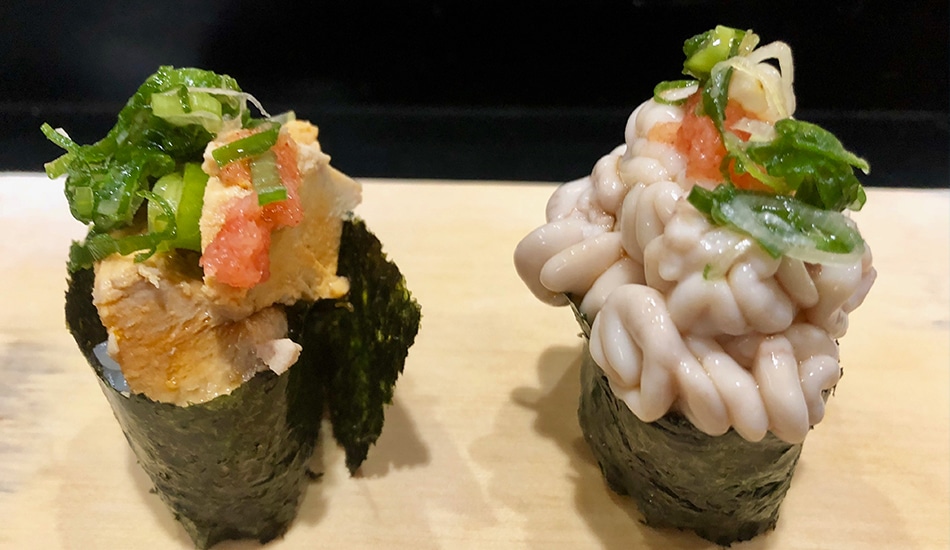Sushi Tabehoudai Ohminato: Rockin Sushi in Sunamachi
Published: January 28, 2020
All-you-can-eat buffets are very popular in Japan, especially in major hotels. Usually costing around 5,000 yen per person, they feature a smorgasbord of global cuisine of a generally high standard. What’s almost unheard of is an all-you-can-eat sushi restaurant and what’s even more unusual is a heavy-metal loving sushi chef who serenades his customers with Iron Maiden. That man is Mr. Kenichi Saeda, proprietor of Sushi Tabehoudai Ohminato in Minami-sunamachi. On a recent afternoon I dropped in for a chat with the remarkable Mr. Saeda.
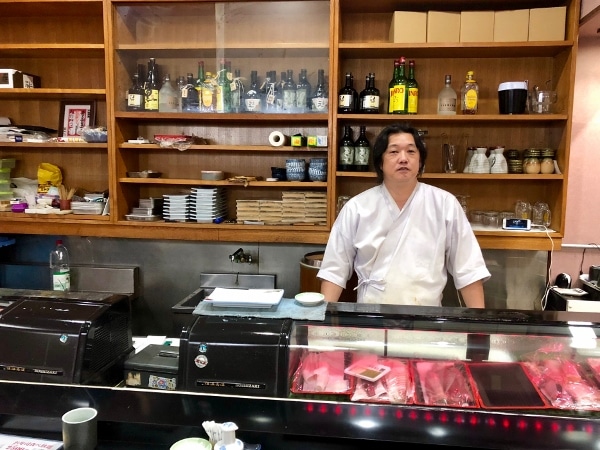
“I was born and raised in the Aomori Prefecture town of Ohminato and began my career in sushi at the age of 15, after I graduated from junior high school,” said Mr. Saeda. Ohminato is now part of Mutsu, the northernmost city on the main Japanese island of Honshu, well-known for its fishing industry and scallop aquaculture in Mutsu Bay. “My school introduced me to a sushi restaurant in Saitama, where I lived and worked as I learned the trade. I worked in several places, generally for three years each, including three years as a full-time chef at Sushi Dai in Tsukiji.” Sushi lovers familiar with the Tsukiji area of Tokyo will recognize the phenomenally popular Sushi Dai, renowned for its top-quality fish at reasonable prices.
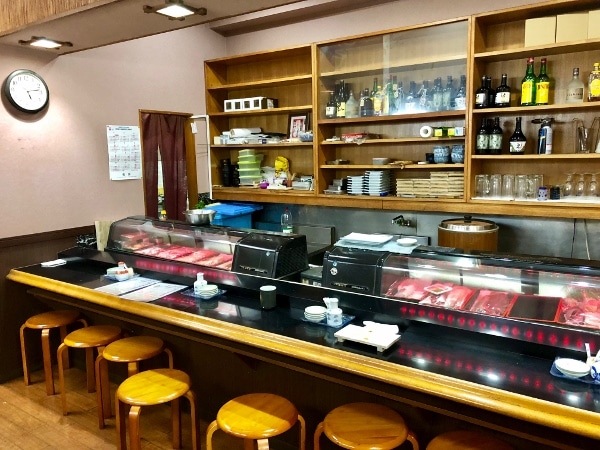
“Because I started so young, I was able to garner experience faster than many of my peers and opened my own place when I was just 28, after I left Sushi Dai,” he explained. “I was living here in Minami-sunamachi and when the local sushiya closed I took it over and renamed it Ohminato after my home town. It was just up the road from here. I moved into this building, a former Japanese pub (izakaya), just a year ago now,” he said.
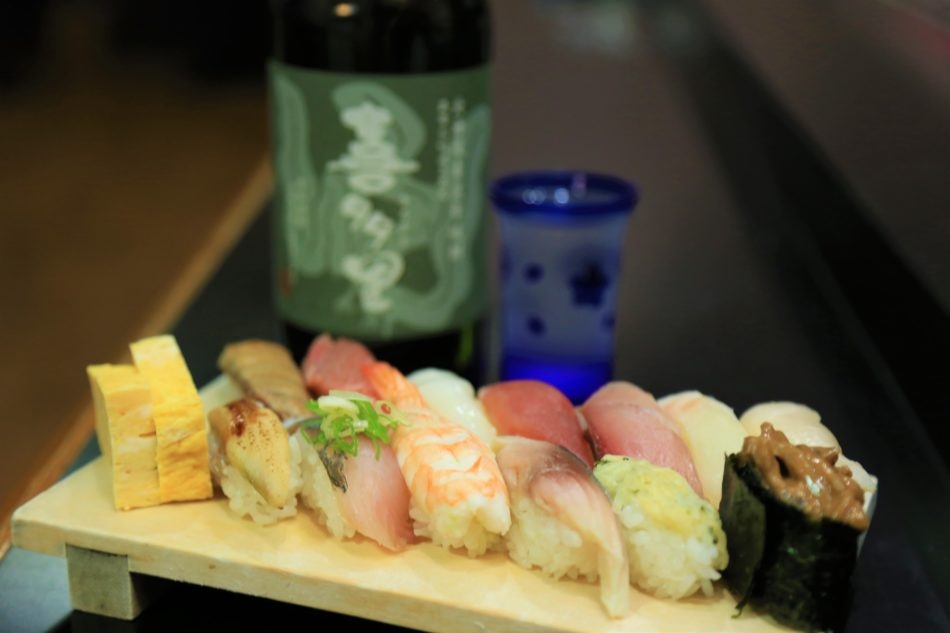
So, what about the all-you-can-eat (tabehoudai) menu? How does it work? “Many sushi restaurants don’t have a price list,” he explained, “so people often feel nervous about eating in
such places. They don’t know how much the bill will come to and it often seems arbitrary. Here everyone pays 2,500 yen, excluding tax. If you eat one piece it’s 2,500 yen and if you eat 15 pieces it’s 2,500 yen too. It’s straightforward and prevents any confusion.”

I was surprised to discover that one of the more expensive items on the menu at Ohminato are menegi, scallion sprouts harvested after just a few days growth. Dusted with rock salt and eaten without soy sauce, they have a light and aromatic yet surprisingly sweet taste.
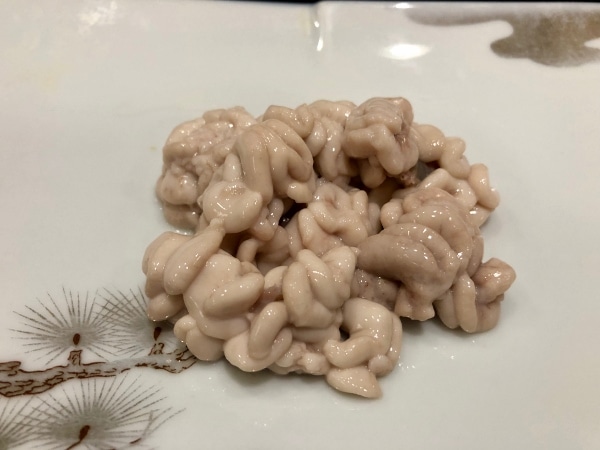
Sushi is all about seasonal fish. One of the more unusual items available in winter is shirako, the milt of male cod fish. Although it may look rather unappealing it has a rich savoury flavour and creamy texture. Highly recommended!

Another winter delicacy is monkfish (ankou in Japanese). The hideously ugly fish is much prized for its delicious meat which features in a hot pot dish (ankou nabe) that is extremely popular in winter in the east of the country. Also popular is ankimo, made from monkfish liver. The livers are rubbed with salt, rinsed with sake, deveined, rolled into cylinders and steamed. The result is a kind of ultra-savoury fish pate which is eaten in tiny nibbles with sake or shochu. Ankimo is also eaten as sushi, topped with grated daikon mixed with red chili pepper (momiji oroshi).
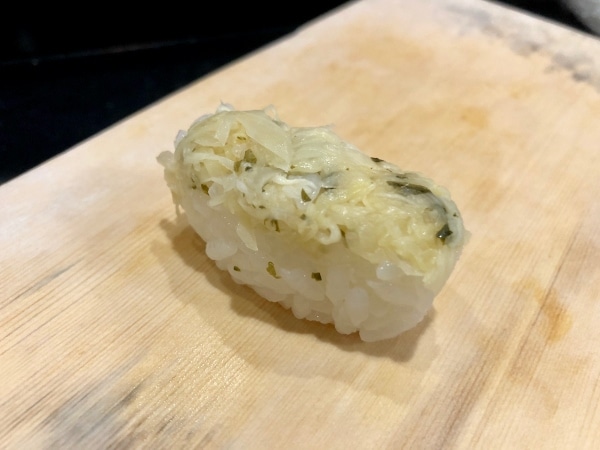
Gari is an essential part of sushi. Made from thinly-sliced young ginger that has been marinated in vinegar and sugar, it’s used to cleanse the palate between different pieces of sushi or after the meal. The ginger sushi at Ohminato is lightly-flavoured and refreshing, particularly after the powerful ankimo. It’s also mixed with a little aromatic perilla (ohba) which adds an extra dimension to the taste. Not only is it tasty but it’s good for you!

The Sea of Japan is home to a variety of squid, including Japanese flying squid (surume ika), Bigfin reef squid (aori ika), Spear squid (yari ika) and Chinese ink cuttlefish (hi ika). On the left here is Chinese ink cuttlefish, soft-textured and mild-flavoured, while the chewy and stronger-flavoured flying squid is on the right.
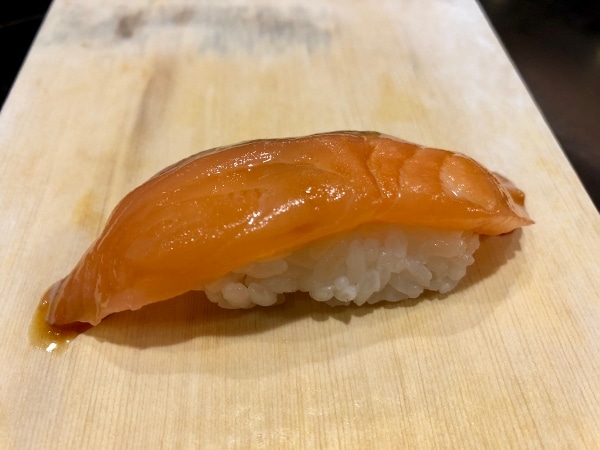
The ever-popular salmon was also very tasty and came served with a brush of sauce.
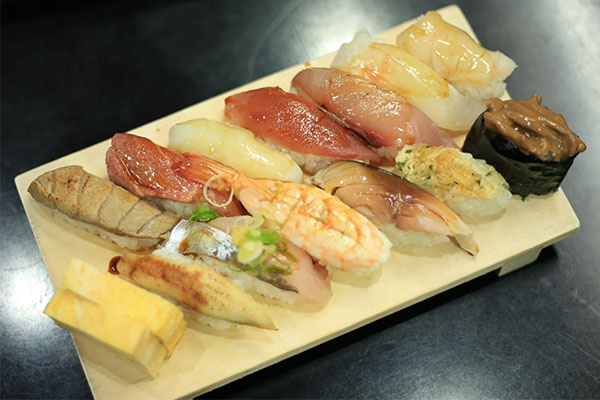
“Omakase” literally means “I’ll (politely) leave it up to you” in Japanese and invites the chef to select from the seasonal specialties available at the time. An “omakase” at Ohminato features (from top left) broiled fatty tuna (aburi toro), fatty tuna (toro), flying squid (surume ika), red lean tuna (maguro akami), Japanese amberjack (buri), sea bream (tai) and scallop (hotate). The second row consists of homemade egg roll, conger eel (anago), horse mackerel (aji), shrimp (ebi), mackerel (saba), pickled ginger (gari) and flying squid liver (surume ika kimo). A tremendous selection!
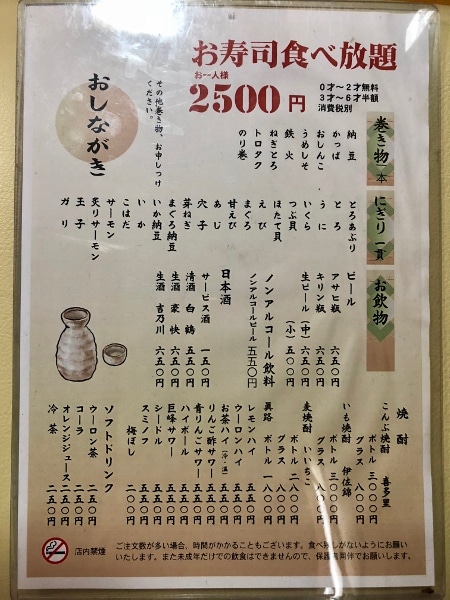
The menu at Ohminato features a variety of popular sushi items not shown here. Sea urchin (uni), salmon roe (ikura), whelks (tsubugai) and gizzard shad (kohada) are also available, as are maki zushi. Kids under two are free while three to six-year-olds are half price. There’s a selection of bottled beers, sake, shochu and soft drinks to go with the sushi. Seasonal fish include Mr. Saeda’s personal favourite bonito (katsuo): “In spring the fish are young and don’t have any fat so the meat is light and refreshing. In autumn the fish are older and have lots of very tasty fat on them!”

Mr. Saeda blasted out Iron Maiden as he prepared for the evening’s business. “I’m a great fan,” he said, “and I’ll be going to see them later this year when they visit Japan. I’ve listened to heavy metal since I was a kid in Aomori. In those days the number of television channels was limited and they closed down early, so after they finished, I used to listen to the radio. At that time the stations played bands like Motörhead, Metallica, Slayer, Megadeth, and Judas Priest. Many of my customers are metal fans as well and come in to eat, talk and listen to music.” Ohminato attracts customers from as far away as Aichi, Fukushima, and Ibaraki. “They’re sushi maniacs,” he says laughing. “The restaurant is open every day, except for when I go to a concert. I’ll also be going to see the Japanese band Seikima-ll this year, another of my favourites. I dress up, wear makeup, and do my hair just like the singer Demon Kogure. It’s great fun,” he says. As we take photographs outside the flashing lights from the chiropractor’s next-door light up Mr. Saeda. “It’s like inner fire,” he says, “Passion!” Passionate about serving top quality sushi at reasonable prices and still rocking; how great is that. If you fancy some Metal with your Maguro, there’s only one destination!
Story and photographs by Stephen Spencer

